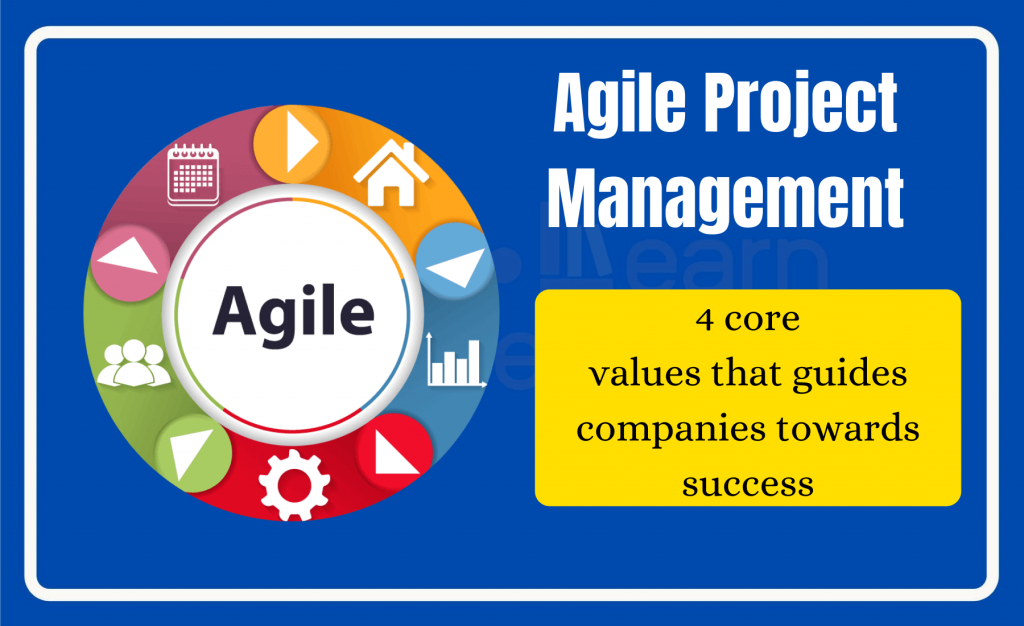One would need to be living under a rock to not have known about Agile nowadays. The name is being connected to everything – agile methodology, agile sales, agile marketing, agile testing, and so on. In any case, what does it mean, and for what reason is agile project management significant?
Agile means – productive or getting the most extreme yield in the least time with no wastage of time. Now, when we put this in the context of project management, Agile project management utilizes those techniques which help in finishing projects proficiently, simultaneously without trading off with quality in any capacity.
Agile project management is a collaborative, iterative project management approach that integrates ceaseless testing and responsiveness to change.
An iterative approach to project management is Agile project management. It is perfect for dynamic workplaces and makes speedy delivery of the products. APM centers around bringing constant enhancements, give adaptability and guarantees delivery of top-notch results before the deadline.
A short history of Agile
Most current APM techniques have their foundations in software development. Thinking back to the 1990s, software teams were finding that the highly-structured “heavyweight” conventional project management methodologies (for example, the Waterfall method) just weren’t satisfactory when it came to how they expected to work.
They were finding that the traps of these heavyweight strategies —, for example, an absence of adaptability, versatility, and even self-sufficiency — made it progressively hard for them to react to change or include their learnings as they worked.
They required shorter improvement cycles (called sprints), an increasingly iterative process, and continuous feedback and testing so that the teams could consider those changes to make the most ideal possible product.
Later in 2001, a lot of software developers got together to talk about core tenets of agile and drill down into the way of thinking behind it. They came up with The Manifesto for Agile Software Development, a collection of values and principles that would be a North Star for teams considering how to become agile.
The 4 core values
The Agile Manifesto consists of 4 primary values and 12 supporting principles that lead the approach to software development. Each Agile methodology applies the 4 values in various manners. In any case, all the teammates depend on these values to guide the development and delivery of high-quality, working software as well as product.
1. Individuals and interactions over processes and tools
Value #1 in the Manifesto is known as “Individuals and interactions over processes and tools.” It’s critical to esteem individuals more exceptionally than procedures or tools. Individuals react to business needs and drive the development process.
When the development is driven by the process or tools, then the team is less receptive to changes and less inclined to address customer needs. Communication is a case of the distinction between esteeming individual versus process.
On account of individual, communication is liquid and happens when a need emerges. On account of a process, communication is planned and requires specific content.
2. Working software over comprehensive documentation
Value #2 in the Manifesto is known as “Software over documentation”. Generally, documenting the product for development and ultimate delivery required huge measures of time. Technical requirements, specifications, prospectus, testing plans, interface design documents, and various endorsements were required for each.
It smooths out documentation rather than eliminating it. In this structure, it gives developers what they have to manage without getting hindered in trivial details. Agile values documentation, yet it esteems working software/ product more.
3. Customer collaboration over contract negotiation
Value #3 in the Manifesto is known as “Customer collaboration over contract negotiation”. Only your customers can mention to you what they need, and you must tune in. Successful development teams work closely with their customers and speak with them now and again.
They won’t have the option to disclose to you the following breakthrough idea (that’s your job), but by listening and getting the input you will comprehend what they genuinely ask for from your product.
It’s predominant to discover approaches to isolate the legal relationship you have with your customers from the product relationship. Contract negotiations have their place, yet they can, without much of a stretch, make a limit with your customer that doesn’t assist you with creating great software.
Make a relationship with customers that empowers communication and you’ll rapidly gain proficiency with their thoughts, opinions, and preferences. It might make your job somewhat harder, however, it will make the outcome far superior.
4. Responding to change over following a plan
Value #4 in the Manifesto is known as “Responding to Change Over Following a Plan”. Conventional software development viewed change as a cost. It was to be dodged.
As indicated by Agile, the brevity of an iteration means priorities can be moved from iteration to iteration and new features can be included in the following iteration. Changes consistently improve a project and provide additional value.
Conclusion
As per the ‘Pulse of Profession report’, 75% of agile organizations met their business objectives. Also, 65% of projects are finished before the cutoff time and 67% inside the financial plan.
Then again, organizations that didn’t utilize this methodology oversaw 56% objective accomplishment rate while 40% completed on schedule, and 45% finished inside the spending plan. This detail mirrors the effect that agile project management methodology could make on project achievement rates.
Agile can assist us with succeeding today, and in the new normal post-COVID. It is particularly substantial because the world is no longer based on individual work and the agile mindset embraces teams. Our present conditions require a quiet reaction to complex nature and this technique enables us to be our best even with dubious occasions.
For more intriguing articles, click HOME.

